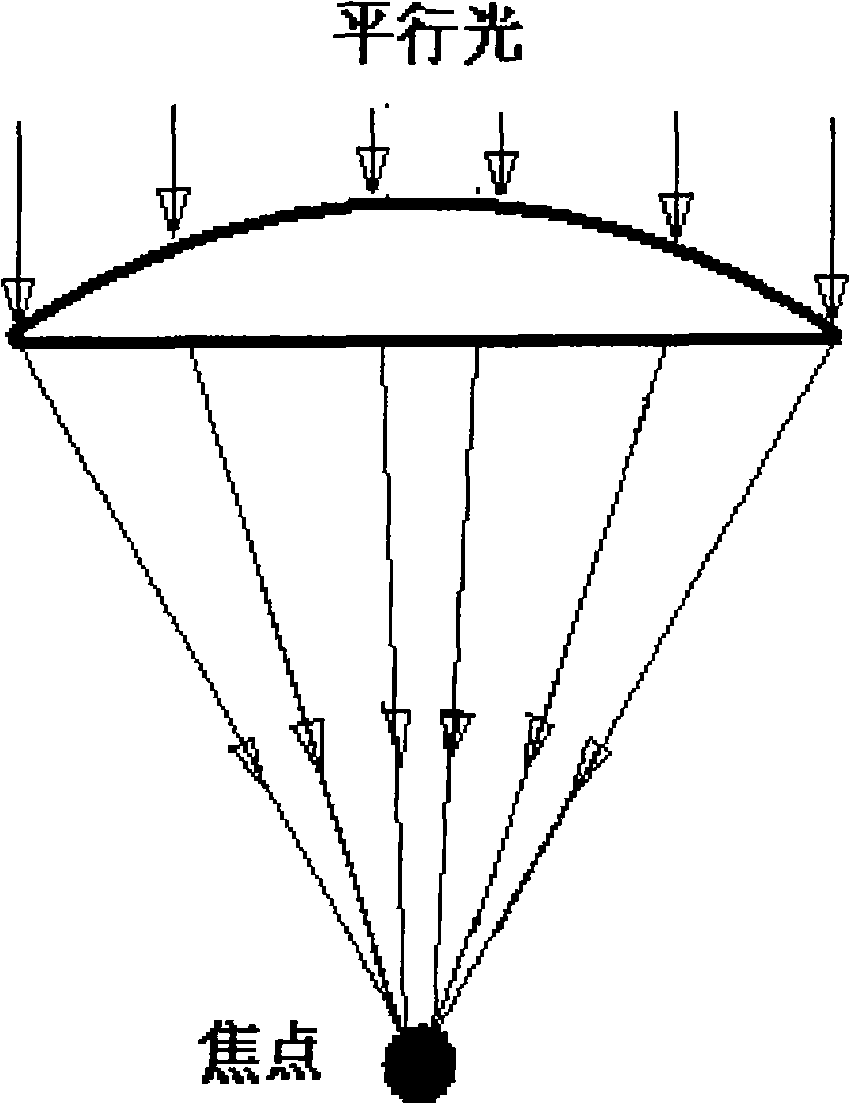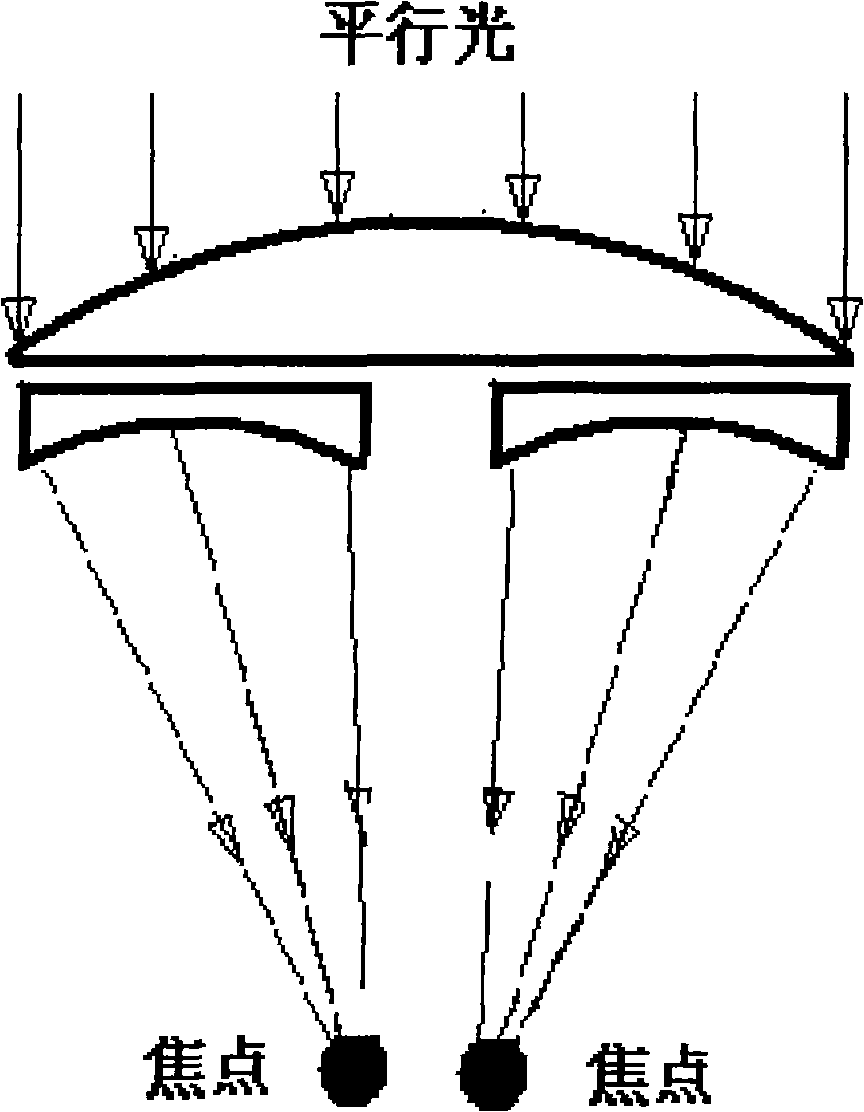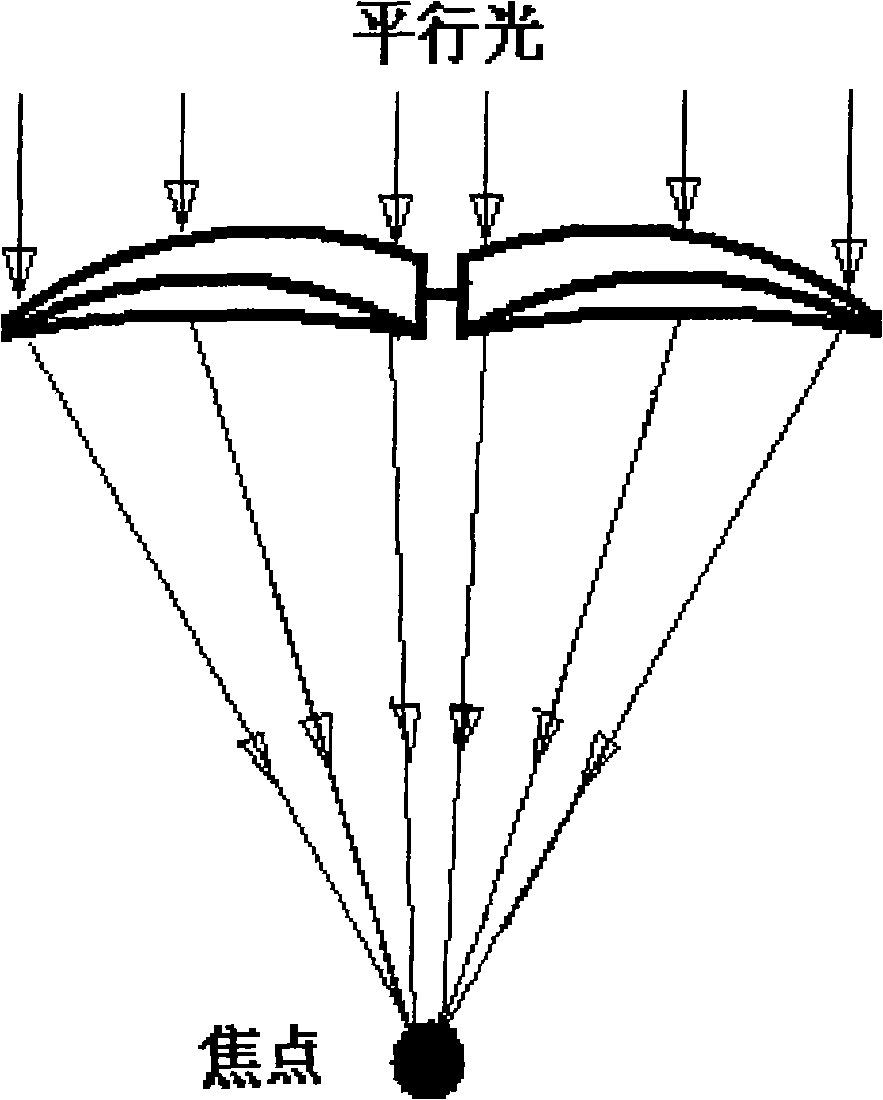Spectacle, spectacle piece and use of spectacle
A technology for spectacle lenses and glasses, applied in glasses/goggles, optics, instruments, etc., can solve the problems of insufficient eccentricity, unsatisfactory preparation, centering of the optical center, etc., to reduce cutting amount, improve observation effect, and eliminate chromatic aberration Effect
- Summary
- Abstract
- Description
- Claims
- Application Information
AI Technical Summary
Problems solved by technology
Method used
Image
Examples
Embodiment 1
[0034] Embodiment 1: a kind of glasses, Figure 7 It is a schematic diagram of the top view section structure of this kind of glasses. This kind of glasses has two spectacle lenses and spectacle frames corresponding to the left and right sides of the eyes. The left and right sides of the glasses are symmetrical. (that is, x=2.5D) anti-distortion aspheric convex lens spectacle lens 2 and a prism 3 with a deflection angle of 8 prism degrees (that is, 8>1.3x=1.3*2.5=3.25△) are closely connected to form a compound Spectacle lens 1 (the convex lens and the prism can be "closed" together by means of gluing, frame fixing, or screw fixing, etc.), the diopter and prism power of the two spectacle lenses are the same, and the bases of the prisms are all inward and parallel The two focal points formed after the light passes through the two spectacle lenses of the glasses coincide (the distance between the geometric centers of the two compound spectacle lenses is about 6.4 cm). Spectacle ...
Embodiment 2
[0035] Embodiment 2: as Figure 16 The glasses shown have two spectacle lenses and spectacle frames corresponding to the left and right sides of the eyes. The two spectacle lenses are left and right symmetrical. The spectacle lenses are composite spectacle lenses 1 with convex lenses and compound prisms. The deflection angle of the center is 9 prism degrees, the diopter and prism degree of the two spectacle lenses are the same, the bases of the prisms are all inward and downward, and the focus of the lens is on the inner and lower front of the spectacle lens ( Figure 17 ), the light below the front seems to come from the front, and the observer can reduce the degree of bowing his head when reading a book. The spectacle frame is an adjustable spectacle frame that can change the distance between the lenses. It has a telescopic sleeve-type nose bridge 5 and a screw 6 that fixes the telescopic sleeve. When the distance between the geometric centers of the two compound spectacle l...
Embodiment 3
[0036] Embodiment 3: as Figure 18 The glasses shown have two spectacle lenses and hat-type spectacle frames corresponding to the left and right of the eyes. The geometric centers of the two spectacle lenses are separated by 6 cm and are symmetrical to the left and right. The deflection angle is 9 prism degrees, the prism base faces inward, and the diopter of the spectacle lens is 3D. The compound spectacle lens can be a concave-convex spectacle lens or a plano-convex lens or a biconvex lens, and the compound spectacle lens can also be a Fresnel lens (or threaded lens) and the like. The convex lens and the prism in the composite spectacle lens can be a single lens, or a composite spectacle lens formed by overlapping and closely bonding a convex lens and another prism. Spectacle lens can adopt high refractive index material also can adopt common material.
PUM
| Property | Measurement | Unit |
|---|---|---|
| Diopter | aaaaa | aaaaa |
| Diopter | aaaaa | aaaaa |
| Diopter | aaaaa | aaaaa |
Abstract
Description
Claims
Application Information
 Login to View More
Login to View More - R&D
- Intellectual Property
- Life Sciences
- Materials
- Tech Scout
- Unparalleled Data Quality
- Higher Quality Content
- 60% Fewer Hallucinations
Browse by: Latest US Patents, China's latest patents, Technical Efficacy Thesaurus, Application Domain, Technology Topic, Popular Technical Reports.
© 2025 PatSnap. All rights reserved.Legal|Privacy policy|Modern Slavery Act Transparency Statement|Sitemap|About US| Contact US: help@patsnap.com



